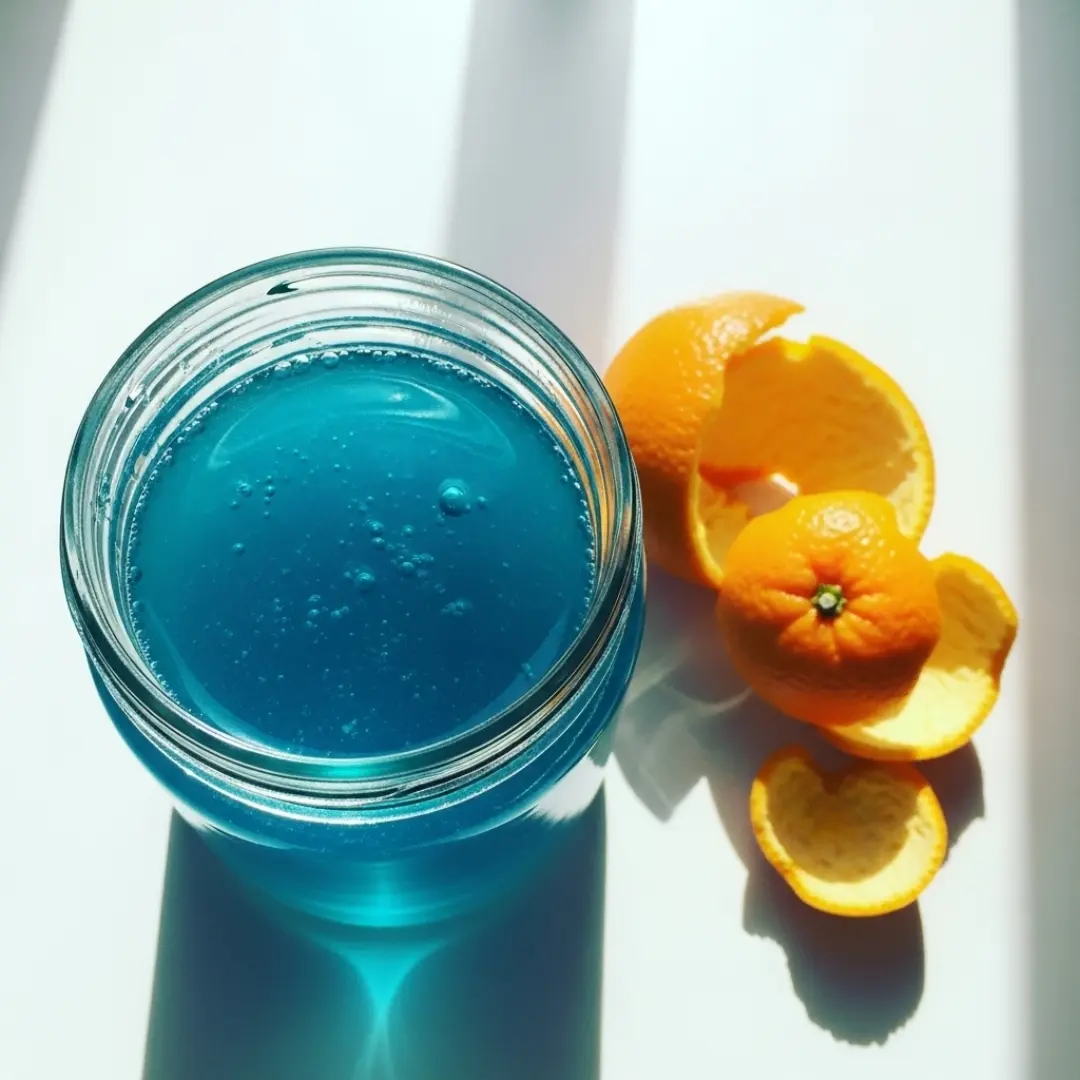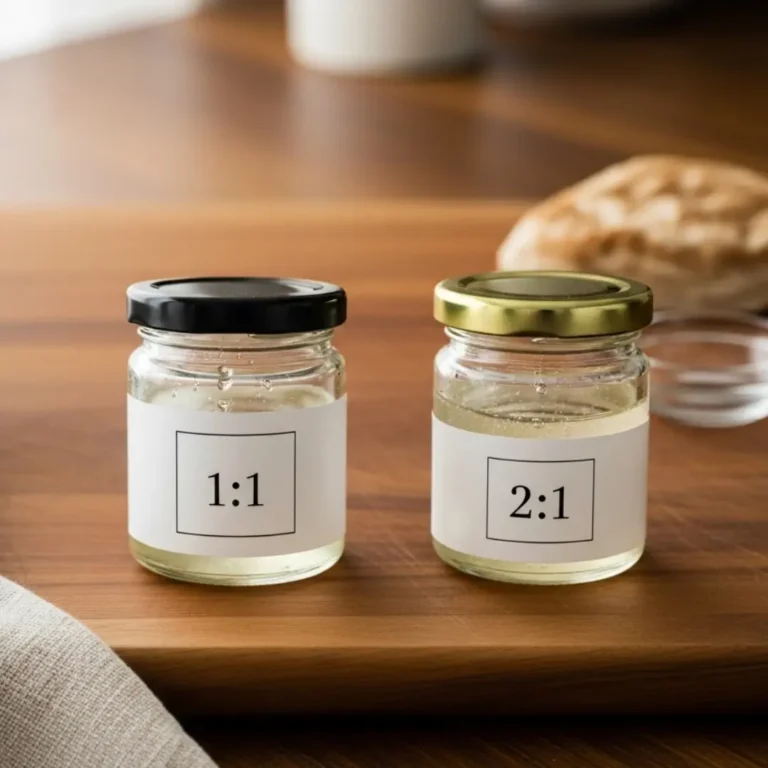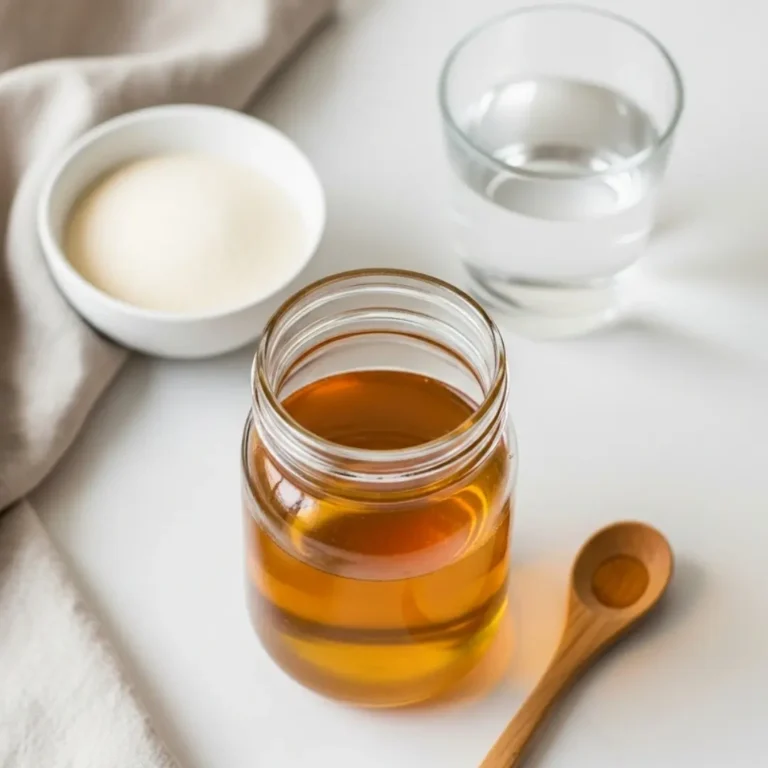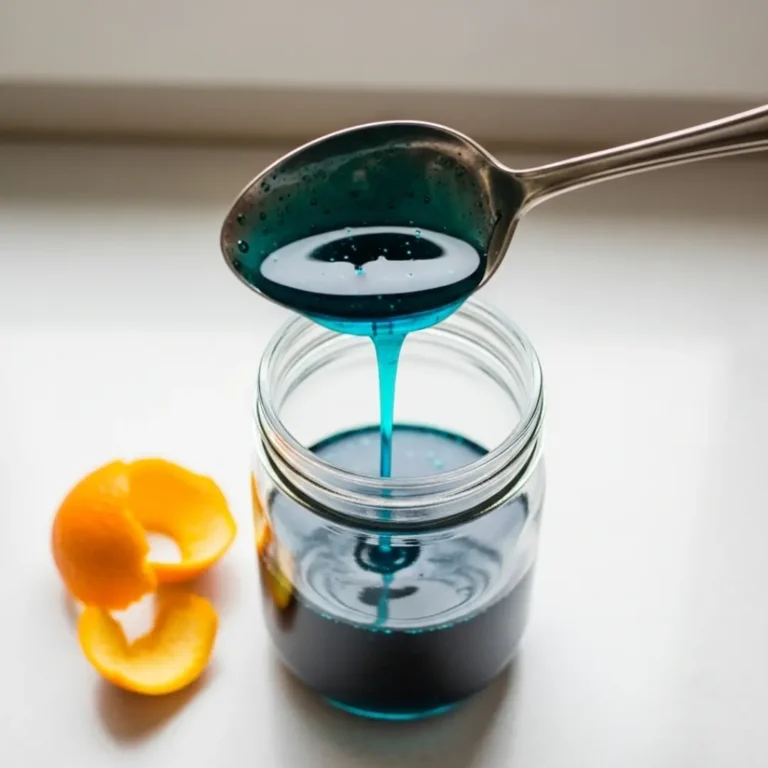Let’s be honest—sometimes you just want your drink to stand out. Not just in taste, but in color, atmosphere, and feeling. That’s where blue curacao syrup shines. It’s more than a novelty or a splash of color—it’s a vibrant, citrusy syrup with surprising versatility, used in everything from show-stopping mocktails to zesty dessert glazes.
I’m Olivia Marino, and if you’ve ever wondered whether blue curacao syrup is the same thing as the liqueur version (they’re not), or if it’s worth keeping in your pantry for more than just one cocktail night, this guide is for you. We’ll walk through what it is, how it’s made, and the best ways to use it—including a homemade version I often make when I want the brightness without the alcohol.
You’ll also get a look at top brands, creative uses in both drinks and desserts, and a few of my favorite kitchen-tested tips that blend tradition with today’s pace. Whether you’re a curious home bartender or just want to bring some unexpected color to a family gathering, this guide has everything you need to know about blue curacao syrup.
Let’s start at the beginning—with what it actually is.
What is Blue Curacao Syrup?
Blue curacao syrup is a non-alcoholic, sweetened syrup flavored with bitter orange peel and tinted a striking shade of electric blue. It’s inspired by the liqueur of the same name—Curacao—which originates from the island of Curaçao in the Caribbean and is traditionally made using the dried peel of the laraha citrus fruit. But while the liqueur has a boozy bite, the syrup version is purely about flavor and color.
For a deeper dive into what blue curacao syrup really is, including its history and ingredients, read this.
It’s most often used to mimic the taste of blue curacao liqueur in mocktails, sodas, flavored waters, and even desserts. Think of it as a tool in your kitchen or bar that delivers the orange-citrus flavor without the alcohol. Some versions lean slightly floral, others more tangy, but all offer a bright, tropical profile that pairs beautifully with lime, pineapple, and coconut.
Is It the Same as Blue Curacao Liqueur?
No—and this distinction matters. Blue curacao liqueur is alcoholic, typically clocking in around 20–25% ABV, while blue curacao syrup contains no alcohol whatsoever. The confusion comes from the identical name and color, but the difference is in how they’re used.
- Blue Curacao Liqueur: Used in cocktails like the Blue Lagoon or Blue Hawaiian; adds both alcohol content and flavor.
- Blue Curacao Syrup: Ideal for mocktails, sodas, baking, or kid-friendly recipes; offers just the citrus taste and visual impact.
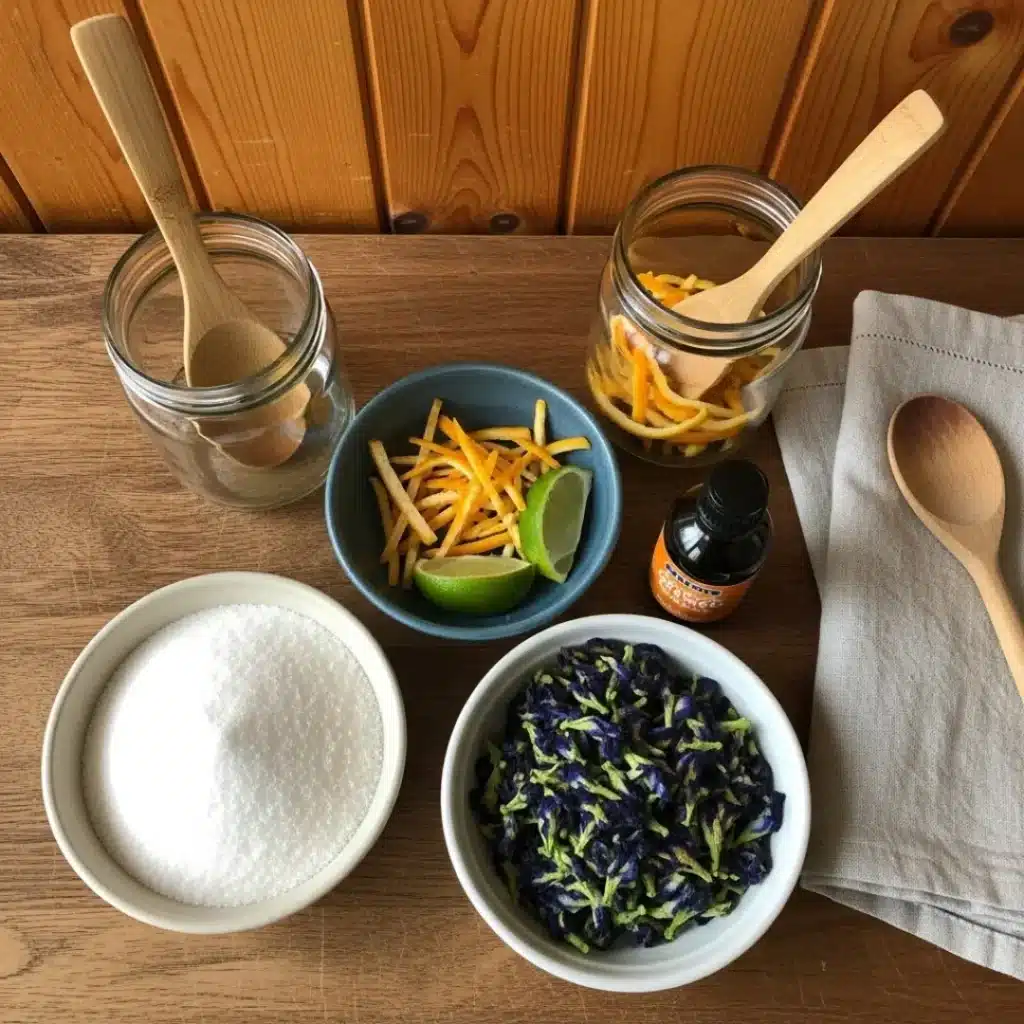
If you’re looking for the color and flavor without the booze—or want to craft something the whole family can enjoy—the syrup is your go-to.
Still unsure whether it contains alcohol? Read this detailed guide on whether blue curacao syrup is alcoholic.
Origin and Color
Blue curacao, in all its forms, traces back to the Dutch Caribbean. The original liqueur was developed using laraha orange peels by Dutch settlers. The distinctive blue hue, however, was a creative addition—original curacao was clear or amber. The blue dye doesn’t affect the flavor but has become its signature feature. That pop of color is what makes it a favorite in tropical-themed drinks and photogenic brunch tables.
The syrup mimics this history in a more accessible form. Most commercial versions use a mix of cane sugar or glucose syrup, food coloring (typically Brilliant Blue FCF), citric acid, and natural or artificial orange flavoring. Some artisanal brands use plant-based dyes or citrus infusions for a cleaner ingredient list.
Is Blue Curacao Syrup Safe for Kids?
Yes, assuming the brand uses food-safe coloring and no alcohol. Always check the label for synthetic dyes or additives if that’s a concern in your household. Many natural versions exist that use spirulina or butterfly pea flower for color instead of FD&C dyes.
Is Blue Curacao Syrup the Same as Liqueur?
Is blue curacao syrup alcoholic?
No. Blue curacao syrup is non-alcoholic. It’s made to replicate the flavor and color of the liqueur but is safe for all ages and ideal for mocktails and desserts.
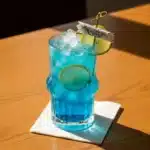
Homemade Blue Curacao Syrup (Alcohol-Free)
- Total Time: 30 minutes
- Yield: 1.5 cups
- Diet: Vegan
Description
A bright, citrusy homemade blue curacao syrup made without alcohol—perfect for mocktails, sodas, and desserts.
Ingredients
1 cup water
1 cup granulated sugar (or coconut sugar for a richer base)
Zest of 1 orange
Zest of ½ lime (optional, for extra tang)
¼ teaspoon orange extract
1–2 drops blue food coloring (or use butterfly pea flower for a natural tint)
Instructions
1. Combine water, sugar, and citrus zest in a small saucepan. Bring to a simmer over medium heat, stirring until sugar dissolves. Let it simmer gently for 3–5 minutes.
2. Remove from heat. Add orange extract. Cover and let steep for 15–20 minutes to let the zest release its oils.
3. Strain out the zest using a fine mesh sieve. Stir in the food coloring one drop at a time until you reach your desired blue.
4. Pour into a clean glass bottle or jar. Cool completely before sealing. Store in the fridge for up to 3 weeks.
Notes
This syrup keeps for 2–3 weeks in the fridge. For a natural dye, steep butterfly pea flower in hot water and use that as your base tint.
You can customize the flavor by adding a cinnamon stick or clove during steeping, or stir in a splash of vanilla for a dessert-style version.
- Prep Time: 5 minutes
- Cook Time: 10 minutes
- Category: Syrup
- Method: Stovetop
- Cuisine: Caribbean-Inspired
How to Use Blue Curacao Syrup
When you first see that bold, ocean-blue syrup, it’s easy to think it’s only good for themed cocktails or novelty drinks. But blue curacao syrup has range. With its sweet-tart citrus profile and dramatic hue, it can elevate everything from party punch to pancake stacks. The key is knowing how to balance the color with flavor, and when to let it shine.
Cocktails vs Mocktails
The most common use for blue curacao syrup is in drinks—but the difference between cocktails and mocktails matters here. Unlike its alcoholic cousin, this syrup can be used freely across the board.
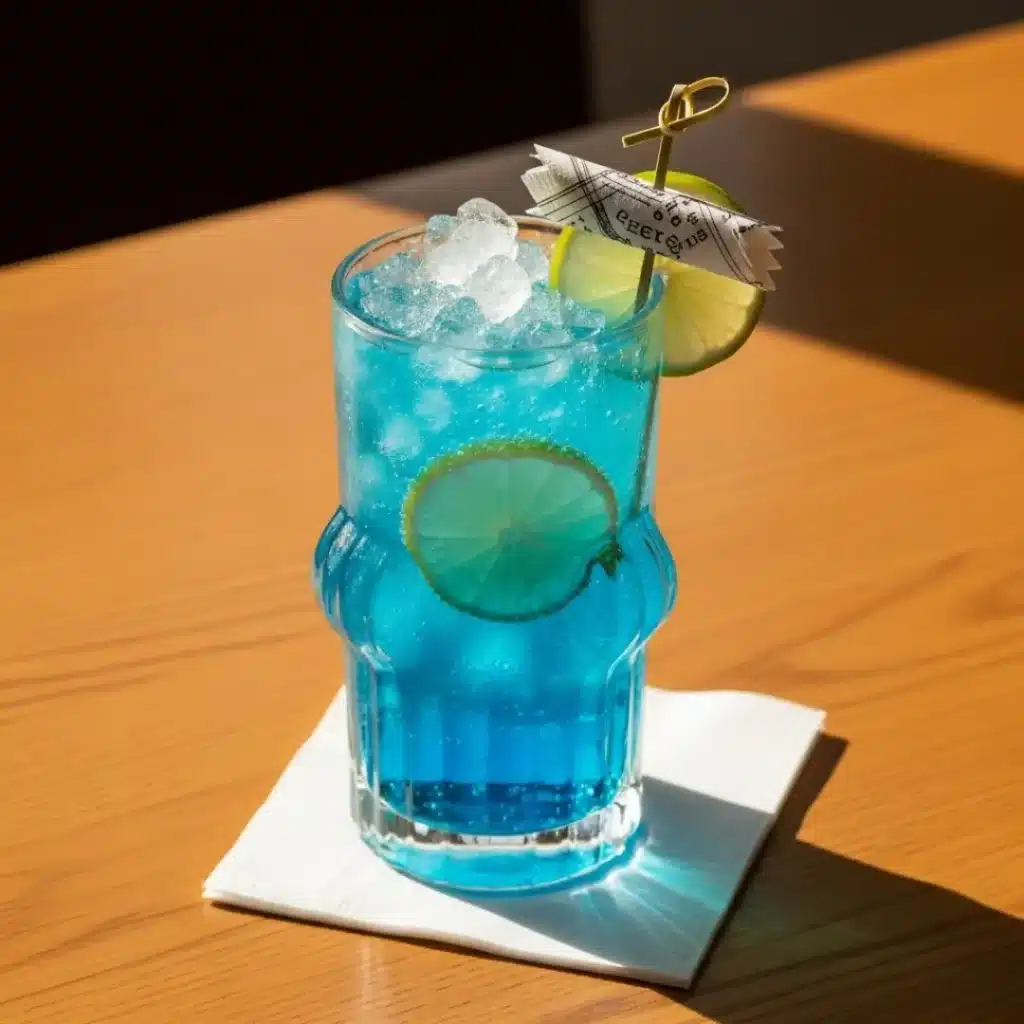
In cocktails, it works as a vibrant accent. Think blue margaritas, blue mojitos, or adding depth to tropical rum blends. But be mindful of sweetness—since the syrup contains sugar, it can tip a drink into overly sweet territory if not balanced with something acidic like lime or lemon juice.
In mocktails, the syrup is a star player. It’s an easy way to add visual excitement and citrus flavor to non-alcoholic drinks. A simple formula? Combine:
- 1 part blue curacao syrup
- 2 parts soda water or lemon-lime soda
- A squeeze of fresh lime
For something more refined, mix it with coconut water and a dash of pineapple juice for a layered mocktail with depth. It’s also perfect for kids’ party drinks or brunch bars when you want the “cocktail” feel without the spirits. You’ll love these colorful blue mocktails with syrup—easy and refreshing.
Desserts and Baking
This might surprise you: blue curacao syrup isn’t just for drinks. It’s also a clever way to infuse citrus notes—and color—into sweets.
Try drizzling it over:
- Vanilla ice cream or coconut sorbet
- Pancakes or waffles for a brunch surprise
- Citrus cupcakes or lemon loaf cake (as a glaze or soaked into the sponge)
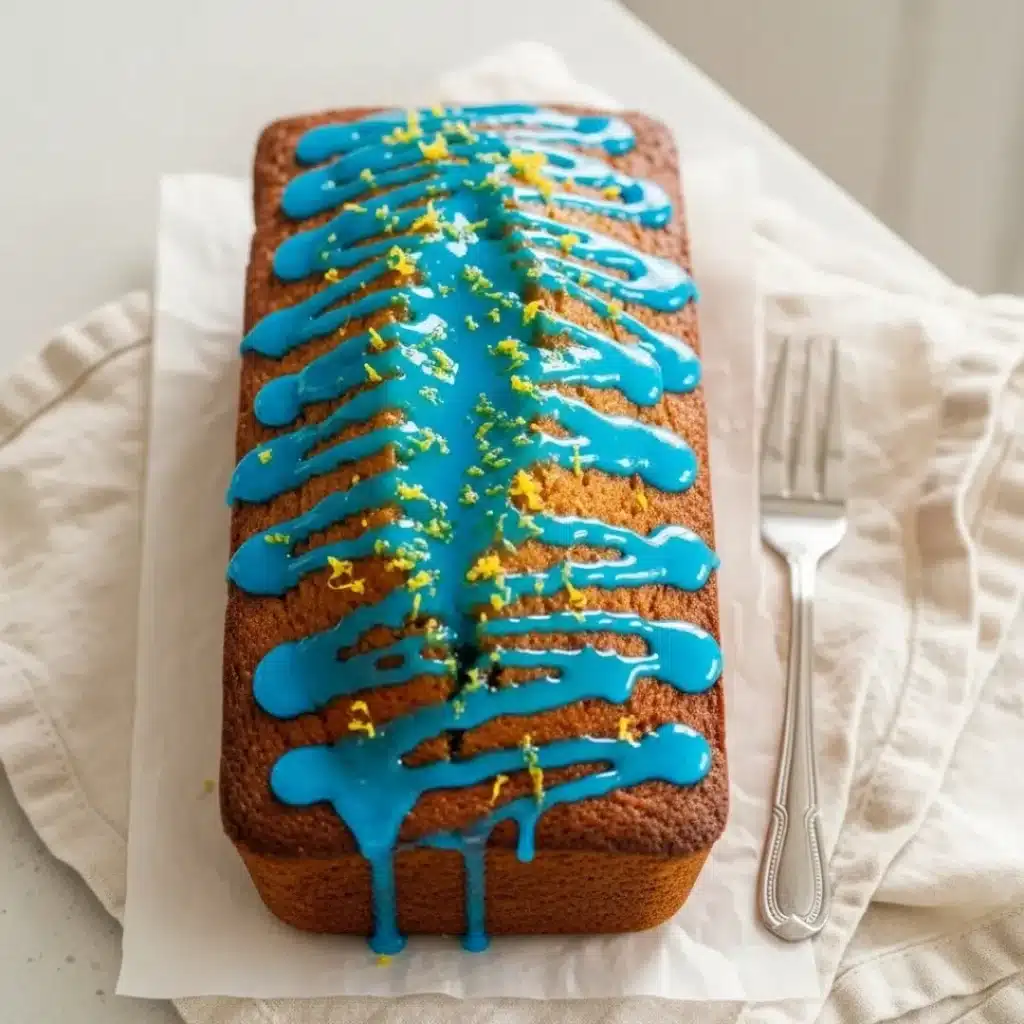
The syrup’s bright orange flavor pairs well with vanilla, almond, and tropical fruits. Some bakers even mix it into whipped cream or buttercream for a blue-tinted, orange-scented finish.
For inspiration, here are some mocktails and cocktails using blue curacao I love to make.
A Little Goes a Long Way
Because of the food coloring, it’s best to use small amounts until you know how vibrant the syrup appears in different mediums. One tablespoon can easily tint an entire glass of lemonade or visibly streak through a dessert glaze. Taste as you go—and consider pairing it with neutral bases like coconut milk, yogurt, or sparkling water to keep things balanced.
Can You Cook or Bake with Blue Curacao Syrup?
Will the color fade when heated?
In most cases, no. Blue curacao syrup retains its color well in cold applications, but when baked at high temperatures, it may dull slightly. For best results, use it in glazes, drizzles, or stirred into icing after baking.
Blue Curacao Syrup Recipe
If you’ve ever browsed the drink aisle and thought, “There’s no way that bright blue stuff is natural,” you’re not wrong—but you’re also not stuck. Making your own blue curacao syrup at home is surprisingly simple. And yes, you can create both the classic version and an alcohol-free version that still delivers on flavor and flair. Check out my Homemade Blue Curacao Syrup Recipe for full steps and flavor tips.
This is the syrup I use when I want a splash of color without the artificial overload. It’s citrusy, fragrant, and adjustable—plus, you get to control the sweetness and the ingredients.
Ingredients & Instructions
This recipe yields about 1½ cups of syrup and keeps for 2 to 3 weeks in the fridge. You’ll need:
Ingredients
- 1 cup water
- 1 cup granulated sugar (or coconut sugar for a richer base)
- Zest of 1 orange
- Zest of ½ lime (optional, for extra tang)
- ¼ teaspoon orange extract
- 1–2 drops blue food coloring (or use butterfly pea flower for a natural tint)
Instructions
- Make the base: Combine water, sugar, and citrus zest in a small saucepan. Bring to a simmer over medium heat, stirring until sugar dissolves. Let it simmer gently for 3–5 minutes.
- Infuse: Remove from heat. Add orange extract. Cover and let steep for 15–20 minutes to let the zest release its oils.
- Strain and tint: Strain out the zest using a fine mesh sieve. Stir in the food coloring one drop at a time until you reach your desired blue.
- Bottle and store: Pour into a clean glass bottle or jar. Cool completely before sealing. Store in the fridge for up to 3 weeks.
Alcohol-Free Version
The main difference here is… nothing. Blue curacao syrup is naturally non-alcoholic, so the above recipe fits the bill. However, if you’re making a version meant to mimic the original liqueur more closely, you could add a dash of orange blossom water or a hint of bitter orange peel for complexity—no spirits needed.
If you’re someone (like me) who likes to skip synthetic dyes, butterfly pea flower can give you a natural blue. It’s subtle, so you may need to add a small amount of lemon juice to shift the color into that vivid teal-blue range.
Flavor Tweaks
- Add a cinnamon stick or clove during steeping for a spiced variation
- Use turbinado or demerara sugar for a golden, richer version
- Stir in a splash of vanilla for a creamier dessert-oriented twist
Can You Make Blue Curacao Syrup Without Food Coloring?
Is there a natural way to make it blue?
Yes. You can steep butterfly pea flowers in hot water and use that as a natural blue tint. It won’t be as neon-bright, but it’s a great alternative if you’re avoiding artificial dyes.
Buying Guide: Choosing the Right Blue Curacao Syrup
Not all blue curacao syrups are created equal. Some taste like melted candy, others veer too floral, and a few actually get the balance just right—bright citrus, clean sweetness, and a color that pops without overpowering. Whether you’re stocking up for your home bar or looking for a reliable option for baking and mocktails, here’s how to choose the right one.
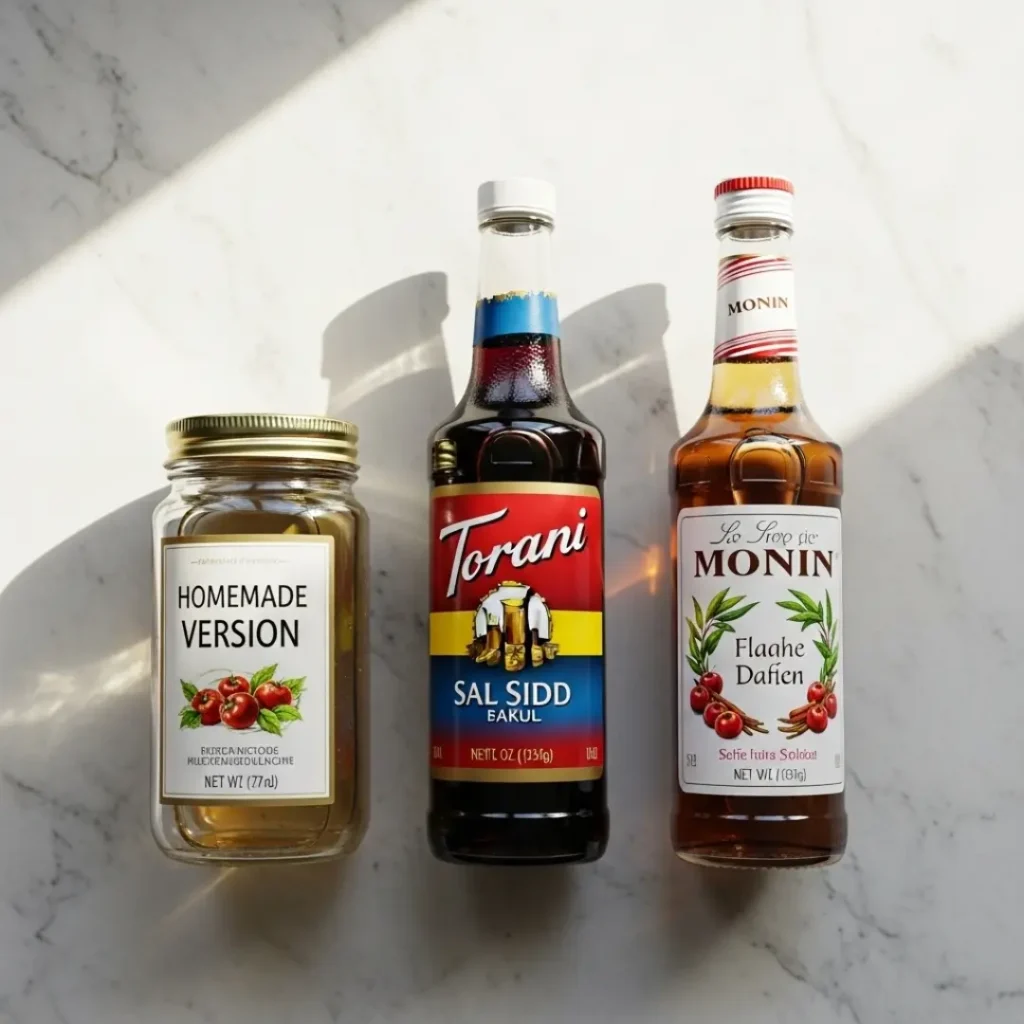
Top Brands
Here are a few widely available brands worth considering:
- Torani Blue Curacao Syrup
Known for its strong orange flavor and high-quality consistency. This one’s ideal for both cocktails and mocktails. Slightly more tart than others, which helps cut sweetness. - Monin Blue Curacao Syrup
A bit more floral, with a sophisticated citrus profile. Uses natural flavors and no artificial preservatives, which appeals to those seeking cleaner ingredients. - Bar Keepers Blue Curacao Syrup
Designed for professional bartenders. Strong color, bold taste—perfect if you’re going for visual impact in cocktails or punch bowls. - DIY Versions
If you prefer total control over sugar levels and flavor strength, the homemade version (see previous section) offers the best customization and no additives.
When choosing a brand, consider how you plan to use it. For drinks, brightness and consistency matter. For desserts, check if it blends smoothly and retains color after refrigeration or baking.
Online vs In-Store
Buying Online
Pros:
- Broader selection of brands and sizes
- Easy access to specialty or small-batch options
- Often cheaper per ounce when buying in bulk
Cons:
- Potential shipping issues with glass bottles
- No way to sample before purchase
Buying In-Store
Pros:
- Instant access—no waiting for delivery
- Ability to inspect color and thickness in person
- Easier to return or exchange if needed
Cons:
- Limited brand availability
- Often marked up in boutique or gourmet stores
If you’re unsure which to try first, check for sample-size bottles or bar sets that include small syrups. It’s a low-risk way to test the flavor without committing to a full bottle.
Does Blue Curacao Syrup Expire?
How long does blue curacao syrup last once opened?
Commercial syrups typically last 6 to 12 months once opened if stored in a cool, dark place. Refrigeration extends freshness. Homemade versions last about 2 to 3 weeks in the fridge. Read my full storage guide to see how long blue curacao syrup lasts at home.
🩵 Note from Olivia:
This guide is based on my personal kitchen experience and love for colorful, alcohol-free recipes. While I do my best to provide thoughtful tips and safe alternatives—especially for families—please remember that every household has different needs. Always check product labels, and consult a healthcare provider if you have allergies, health conditions, or dietary restrictions.
FAQs About Blue Curacao Syrup
These are the questions people most often ask when they come across blue curacao syrup—especially if they’ve only seen the liqueur version in bars or brightly colored drinks. Let’s clear things up.
What is Blue Curacao Syrup?
Blue curacao syrup is a non-alcoholic, citrus-flavored syrup designed to mimic the look and taste of blue curacao liqueur. It’s made with orange peel flavoring, sugar, water, and usually blue food coloring. While the original curacao was a liqueur derived from bitter orange peels on the island of Curaçao, the syrup version is purely for flavor and visual flair. It’s commonly used in mocktails, sodas, slushies, and desserts.
Does Blue Curacao Have Alcohol in It?
It depends on what you’re using. Traditional blue curacao liqueur does contain alcohol—usually around 20–25% ABV. However, blue curacao syrup does not. If you’re using the syrup version for drinks or recipes, you’re getting the flavor and color without any alcohol content.
Is Torani Blue Curacao Syrup Alcoholic?
No. Torani’s Blue Curacao Syrup is completely non-alcoholic. It’s one of the more popular brands used in coffee shops, bars, and home kitchens specifically because it adds that orange-citrus zing and bold blue color without introducing alcohol. It’s safe for kids, mocktail drinkers, and anyone avoiding spirits.
What Does Blue Curacao Flavoring Taste Like?
It’s citrusy, bright, and slightly sweet—like orange peel with a hint of bitterness. Some describe it as tasting similar to orange candy or a tangy triple sec without the alcohol. It pairs well with tropical fruits like pineapple, coconut, and lime, and brings a fresh, summery note to anything it touches.
How Long Does Blue Curacao Syrup Last?
Store-bought versions like Torani or Monin typically last 6–12 months after opening. Keep them sealed and in a cool, dry place. Refrigeration can help preserve flavor. Homemade syrups, on the other hand, last 2–3 weeks when stored in a clean glass container in the fridge.
Can I Use Blue Curacao Syrup in Non-Alcoholic Drinks?
Is it just for cocktails?
Not at all. Blue curacao syrup is perfect for mocktails, lemonade spritzers, Italian sodas, or even fun drink recipes for kids. It adds both flavor and a pop of visual excitement—no alcohol needed.
Related Syrups and Substitutes
Let’s say you’re out of blue curacao syrup—or maybe you’re wondering if there’s a more natural or less vibrant alternative. Whether you’re substituting for flavor, color, or dietary reasons, there are several options worth considering. And understanding how these syrups differ can help you make better choices in your recipes.
Triple Sec vs Curacao
These two often get lumped together, but they’re not the same.
- Triple Sec is a clear, orange-flavored liqueur that’s usually drier and less sweet than blue curacao. If you’re making a drink and the color isn’t important, triple sec (or a syrup version of it) is a great substitute.
- Blue Curacao is essentially triple sec with added blue coloring and sometimes more sugar. In syrup form, the flavor is similar—but the color is the key differentiator.
Need a refresher on how much sugar to use? Check out the best simple syrup ratios guide.
If you’re substituting blue curacao syrup in a mocktail and still want the orange profile, any orange-flavored syrup (like orange blossom or orange simple syrup) will do. You can always add a drop of blue food coloring if needed for visual impact.
Here’s my full breakdown on curacao vs triple sec if you’re choosing between the two.
Simple Syrup Basics
Sometimes the best solution is the simplest one. Simple syrup—a mix of equal parts sugar and water—is the foundation of most flavored syrups, including blue curacao syrup. Once you’ve mastered a base syrup, you can infuse it with orange peel, herbs, spices, or even edible flowers.
Here’s a basic formula to build your own alternative:
- 1 cup water + 1 cup sugar, simmered until clear
- Add citrus zest, a splash of extract, or even a cinnamon stick
- Optional: tint with natural colorants like butterfly pea flower or blue spirulina
This route gives you full control over sweetness, flavor intensity, and ingredients. It’s especially helpful for those avoiding artificial colors or looking to experiment with custom blends.
Want to make your own citrusy blends? Start by learning how to make simple syrup basics first.
What’s the Best Substitute for Blue Curacao Syrup in Mocktails?
I don’t have blue curacao syrup—what else can I use?
Try mixing orange simple syrup with a drop of blue food coloring. Or use orange juice concentrate and sugar to make a quick stovetop version. For a natural blue tint, butterfly pea flower tea sweetened with honey or agave works in a pinch.
Conclusion: A Splash of Color, A Touch of Tradition
Blue curacao syrup may look bold and modern, but at its core, it’s just another way we’ve learned to turn simple citrus into something joyful. Whether you’re crafting a mocktail for brunch, glazing cupcakes for a summer party, or just curious about that bright bottle behind the bar—now you’ve got the knowledge (and the recipe) to make it your own.
In my kitchen, I see ingredients like this as invitations. Not to impress, but to play—to add a splash of color, a whisper of orange, and a moment of delight to something ordinary. And that’s what cooking should feel like.
So whether you’re reaching for a store-bought bottle or stirring up a homemade version, I hope this guide helped you feel more confident, more curious, and maybe even a little inspired.
For more daily recipes, wellness sips, and heritage-inspired food stories, follow along on Facebook.
From my kitchen to yours—cheers to vibrant flavors, always made with heart.
– Olivia Marino

